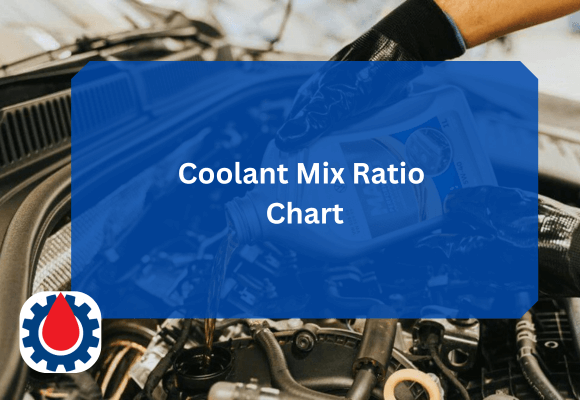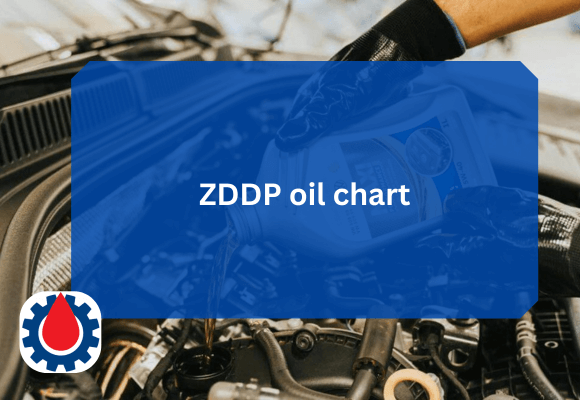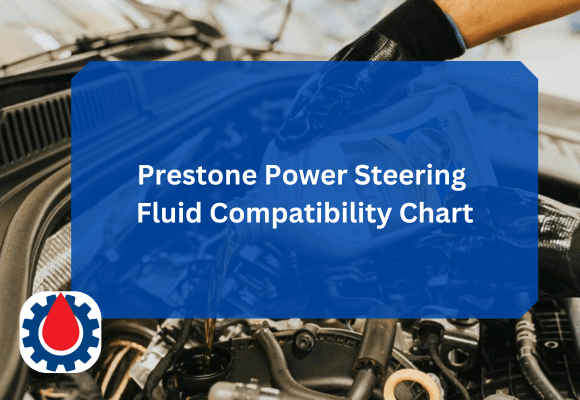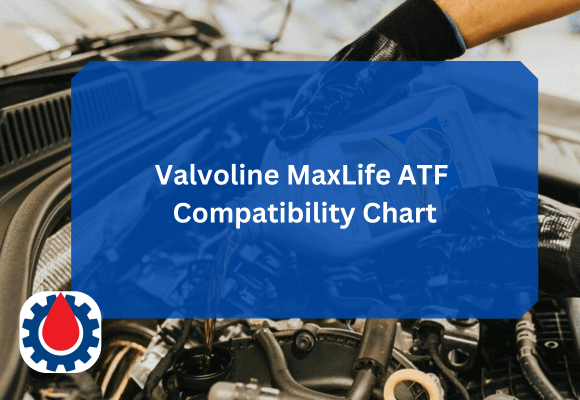A proper antifreeze-to-water mixture ensures that your engine stays within optimal temperature ranges, preventing overheating in summer and freezing in winter. Using the wrong ratio can lead to corrosion, overheating, or even catastrophic engine damage.
This post provides a comprehensive coolant mix ratio chart and explains how to choose the best mixture for your climate and vehicle type.
Coolant Mix Ratio Chart
| Coolant Type | Coolant to Water Ratio | Freeze Protection (°F / °C) | Boiling Point (°F / °C, under pressure) | Best for Climate / Region |
|---|---|---|---|---|
| Ethylene Glycol | 30% Coolant / 70% Water | +5°F / -15°C | 255°F / 124°C | Mild / Warm climates |
| Ethylene Glycol | 40% Coolant / 60% Water | -10°F / -23°C | 260°F / 127°C | Moderate climates |
| Ethylene Glycol | 50% Coolant / 50% Water | -34°F / -37°C | 265°F / 129°C | Most regions |
| Ethylene Glycol | 60% Coolant / 40% Water | -60°F / -51°C | 270°F / 132°C | Cold climates |
| Ethylene Glycol | 70% Coolant / 30% Water | -84°F / -64°C | 276°F / 135°C | Extreme cold |
| Ethylene Glycol | 100% Coolant (no water) | -10°F / -23°C | 320°F / 160°C | Not recommended |
| Propylene Glycol | 30% Coolant / 70% Water | +5°F / -15°C | 255°F / 124°C | Mild / Warm climates |
| Propylene Glycol | 40% Coolant / 60% Water | -10°F / -23°C | 260°F / 127°C | Moderate climates |
| Propylene Glycol | 50% Coolant / 50% Water | -34°F / -37°C | 265°F / 129°C | Most regions |
| Propylene Glycol | 60% Coolant / 40% Water | -60°F / -51°C | 270°F / 132°C | Cold climates |
| Propylene Glycol | 70% Coolant / 30% Water | -84°F / -64°C | 276°F / 135°C | Extreme cold |
| Propylene Glycol | 100% Coolant (no water) | -10°F / -23°C | 320°F / 160°C | Not recommended |
| OAT (Organic Acid Technology) | 50% Coolant / 50% Water | -34°F / -37°C | 265°F / 129°C | Most regions |
| HOAT (Hybrid OAT) | 50% Coolant / 50% Water | -34°F / -37°C | 265°F / 129°C | Most regions |
| IAT (Inorganic Additive Technology) | 50% Coolant / 50% Water | -34°F / -37°C | 265°F / 129°C | Most regions |
Related 60/40 Coolant Mix Chart(Complete Guide)
Understanding the Ideal Coolant Mix Ratio
Most vehicle manufacturers recommend a 50/50 coolant mix, which offers excellent year-round protection. However, the right mix can change depending on where you live:
- Tropical climates (above 80°F / 27°C year-round): 30–40% coolant for better heat transfer.
- Temperate climates: 50/50 ratio provides balanced protection.
- Subzero regions (below -20°F / -29°C): 60/40 or 70/30 for maximum freeze resistance.
Important: Never exceed 70% coolant concentration. Pure antifreeze reduces the fluid’s ability to absorb heat, leading to possible overheating.Related BMW Leaking Coolant but Not Overheating(5 Causes + Solutions)
How to Mix Engine Coolant Properly
- Check the manufacturer’s recommendation: Look in your owner’s manual or radiator cap for details.
- Use distilled water only: Tap water contains minerals that can corrode the radiator and engine block.
- Measure accurately: Use a clean container or mixing jug with ratio markings.
- Mix before filling: Never pour coolant and water separately into the radiator. Pre-mix them for uniform consistency.
- Fill slowly: Add the mixture to the radiator or overflow reservoir up to the recommended level.
- Bleed air: Run the engine with the heater on to remove trapped air pockets.
Coolant Types and Compatibility
| Coolant Type | Base | Typical Color | Lifespan | Suitable For |
|---|---|---|---|---|
| IAT (Inorganic Additive Technology) | Ethylene glycol | Green | 2–3 years / 30,000 miles | Older vehicles (pre-2000) |
| OAT (Organic Acid Technology) | Ethylene or propylene glycol | Orange / Red | 5 years / 150,000 miles | Modern vehicles |
| HOAT (Hybrid Organic Acid Technology) | Ethylene glycol with silicates | Yellow / Turquoise | 5 years / 150,000 miles | European and Asian vehicles |
Always avoid mixing different coolant types. Mixing IAT and OAT, for example, can neutralize their corrosion inhibitors and shorten system life.
Related Car AC PSI Chart(Complete Guide)
Signs Your Coolant Mix Ratio Is Wrong
An incorrect coolant mixture can lead to several warning signs:
- Engine overheating during long drives
- Frozen coolant in winter
- Corrosion or rust around the radiator cap or reservoir
- Reduced cabin heat from the heater core
- Coolant leaks due to a pressure imbalance
If you notice these symptoms, drain and flush your cooling system, then refill with the correct mixture.
Related AC Vent Temperature Chart(Complete Guide)
Why Coolant Mix Ratio Matters
- Prevents Engine Damage: Protects against extreme temperature fluctuations.
- Improves Efficiency: Correct ratios enhance heat transfer for smoother engine operation.
- Prevents Corrosion: Balanced coolant chemistry protects metal surfaces from rust.
- Extends Component Life: Water pump, radiator, and hoses last longer.
Neglecting the proper ratio could result in engine failure, coolant leaks, and costly repairs.
Tips for Maintaining Coolant Health
- Check the coolant level every 3 months or before long trips.
- Replace coolant every 2–5 years, depending on type and driving conditions.
- Inspect hoses and radiator caps for leaks.
- Use a coolant tester or refractometer to verify freeze protection levels.
Related 134a A/C Pressure Chart(Complete Guide)
FAQs
What happens if I use too much water in coolant?
Too much water reduces the boiling point and freeze protection, leading to overheating or freezing in extreme temperatures.
Can I mix green and orange coolant?
No. Mixing different coolant types can cause chemical reactions that lead to sludge buildup and reduced corrosion protection.
How do I check my coolant mix ratio?
Use a coolant hydrometer or refractometer. It measures the specific gravity to show the freeze and boil protection range.
Should I use distilled or tap water?
Always use distilled water to prevent mineral deposits and scale buildup inside the cooling system.
Can I use 100% coolant?
No. Pure coolant doesn’t transfer heat efficiently and may cause overheating.
Related ATF Viscosity Chart(For ALL Types)
Final Thoughts
The coolant mix ratio plays a vital role in protecting your engine from heat, cold, and corrosion. The ideal 50/50 antifreeze-to-water blend suits most climates, but colder regions may need up to 70/30. Always check your vehicle manufacturer’s recommendations and adjust based on your environment.
With the right coolant mixture and regular maintenance, you’ll ensure longer engine life and dependable performance in all seasons.




